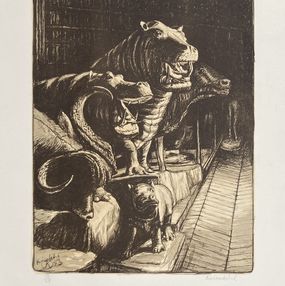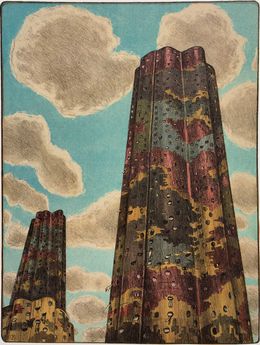
Presentation
Born in 1932 in Basel (Switzerland), Jürg Kreienbühl died in 2007 in Cormeilles-en-Parisis (France).
After an apprenticeship as a house painter, he goes to France, thanks to the earning of a scholarship, where he paints rubbish tips and cemeteries in the suburb outside Paris. He ends up living in the heart of the slum area in Bezons, in a old bus without wheels. There, in extremely difficult conditions, he makes the portrait of this cour des miracles filled with his friends and models, the migrants and the gypsies. Four years later, he definitely settles near Argenteuil and buys a "caravan-studio" to keep on painting from nature fringes, prostitutes, vagrants and disabled people from the waste grounds and slums in the surrounding.
From the 1970's, Jürg Kreienbühl takes up again the practice of etching and lithography. His important and continuous production accompanies, in addition to portraits and still lives, all the subjects of the following years: a former factory of unsold saints for churches (1975), the pollution and the “France" liner at the “quay of oblivion" in Le Havre (1978-1979), the cemetery of Neuilly-sur-Seine and the building site of La Défense (1980), the abandoned treasures of the gallery of paleontology - closed at that time - in the Jardin des plantes in Paris (1982-1985), the nuclear power station in Gravelines and the port of Dunkirk (1995-1997) and the Swiss subjects in the 1990's (The Warteck brewery, Tribute to Basel, The enchanted garden of artist Bernhard Luginbühl, mountains landscapes).
Expressed at his beginning through an expressionist manner, his fascination for rot and destruction finds a definite form in an objective realism, establishing an uncompromising picture of the socio-economic and environmental disruption in the second half of the 20th century. With the accuracy and hallucinatory sharpness of a scientist, Jürg Kreienbühl makes himself the disillusioned painter of the old beliefs, the suburbs and the condemned worlds, the social outcasts and the ravages from urbanisation and industrialisation.
During the artist's lifetime, he has been exhibited and purchased by major public and private institutions (Kunstmuseum Basel, Aargauer Kunsthaus, FRAC Ile-de-France, UBS AG collection, Migros Museum…). After his death, his work is being progressively rediscovered and reassessed. It joined very recently the collection of the Centre Pompidou and the Museum of Fine Arts of Rennes.

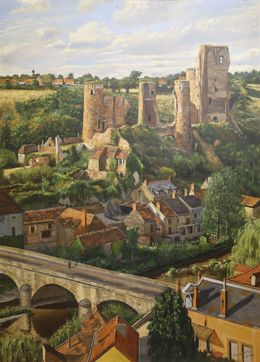
Vue sur Hérisson
Jürg Kreienbühl
Painting - 125 x 90 x 1 cm Painting - 49.2 x 35.4 x 0.4 inch
$18,314

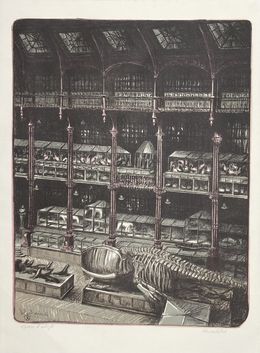
La grande galerie avec squelette de baleine
Jürg Kreienbühl
Print - 91.5 x 71.5 cm Print - 36 x 28.1 inch
$2,220
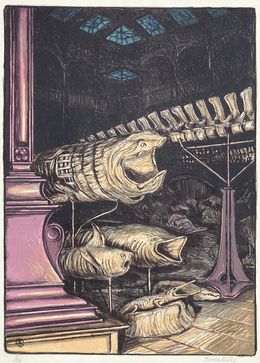

Requin et colonne vertébrale de baleine
Jürg Kreienbühl
Print - 40.5 x 59 x 1 cm Print - 15.9 x 23.2 x 0.4 inch
$666

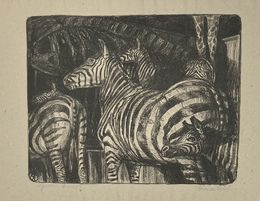
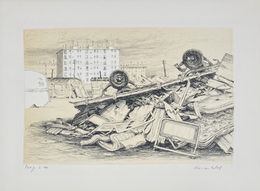

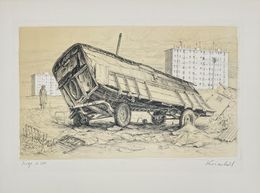
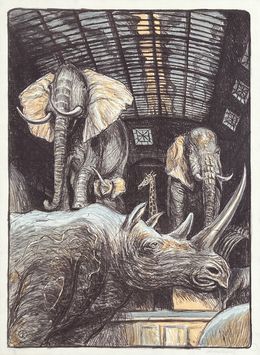

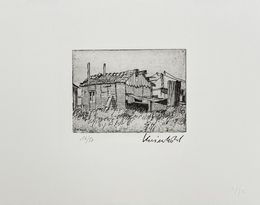



Discover our selections of works by artists
What are their 3 main works?
When was Jürg Kreienbühl born?
